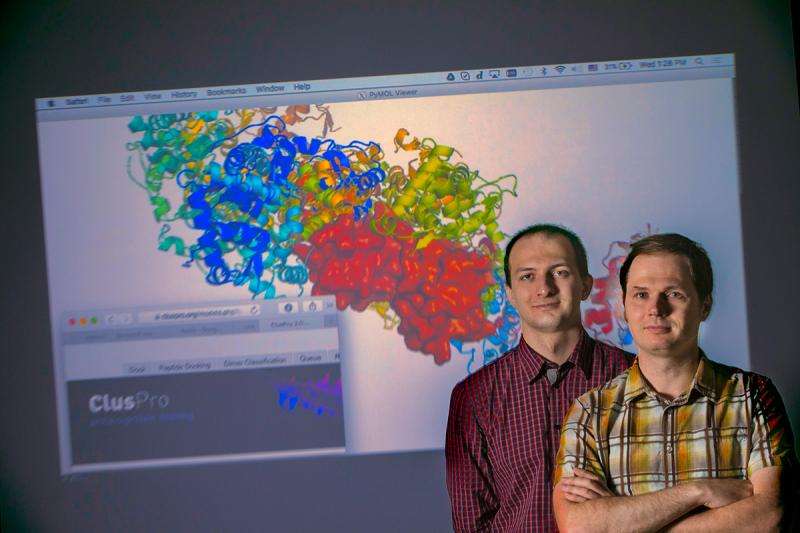Modeling protein interactions simplified with computer server

Proteins are the most abundant substance in living cells aside from water, and their interactions with cellular functions are crucial to healthy life. When proteins fall short of their intended function or interact in an unusual way, these disruptions often lead to disease development. By modeling the structure of protein interactions – a process that has been complicated for researchers for years – scientists gain important insight to many diseases. Stony Brook University-led research team through the Laufer Center for Physical and Quantitative Biology has created a user-friendly automated computer server that calculates complex computations of modeling protein interactions with a handful of clicks from a home computer. The resource, available researchers around the world, is detailed in a paper published in Nature Protocols.
Understanding the rules by which proteins interact enables researchers to design new interactions. For example, modeling interactions of special proteins called antibodies with other molecules may enable pharmacology researchers to develop new and better drugs to target cancer or HIV.
Lead author Dima Kozakov, PhD, Assistant Professor in the Department of Applied Mathematics and Statistics in the College of Engineering and Applied Sciences, and an affiliate faculty member of the Laufer Center and the Institute for Advanced Computational Science at Stony Brook University, says that determining the structure of the protein interactions is no simple task. Additionally, defining the 3-D atomic structure of protein complexes is crucial, as this helps scientists determine molecular mechanisms of many diseases.
"Obtaining 3-D structures of such complexes is not a trivial matter, as proteins typically have sizes much smaller than the wavelength of visible light and thus cannot be seen in a microscope," explains Dr. Kozakov. "Traditionally, protein complex structures were obtained using expensive and time-consuming experimental techniques such as X-ray crystallography. While these techniques worked relatively well for finding the structures of individual proteins, the delicate, short-lived protein complexes pose a much more difficult problem."
To bridge the gap between the number of known individual protein structures and the number of known complexes, Dr. Kozakov explained, researches created special computational algorithms. The idea behind all of these algorithms is to predict the structure of the complex using the structures of individual proteins as inputs. Computer programs calculate billions of possible arrangements of molecules forming the complex and then defines the one that that optimizes the interatomic forces. This computational approach became known as protein docking.
For the last decade, Dr. Kozakov and his collaborators have developed unique protein docking algorithms, which originally existed only as highly sophisticated computational programs, and only trained scientists and programmers specializing in protein modeling could perform the calculations.
To make high-performance computational tools for protein modeling and docking accessible to any researcher, Dr. Kozakov and colleagues in his lab, together with collaborators at Boston University, developed the ClusPro server. In the paper titled, "The ClusPro web server for protein-protein docking," the researchers describe advancements that made the system user-friendly and accessible to all researchers from their personal computers.
ClusPro allows its users to model not only protein-protein complexes, but also interactions of proteins with other types of molecules. For instance, it can be used to predict how proteins bind to nucleic acids – such as RNA, or heparins – sugar-like molecules that are widely used as blood thinner medications.
ClusPro has consistently provided the most accurate results among automated protein docking servers in an international competition called CAPRI . The design of the server is not only for professional scientific use. The simplicity of usage enables educators and students to use ClusPro, such as for high-school and college courses.
More information: Dima Kozakov et al. The ClusPro web server for protein–protein docking, Nature Protocols (2017). DOI: 10.1038/nprot.2016.169
Journal information: Nature Protocols
Provided by Stony Brook University

















